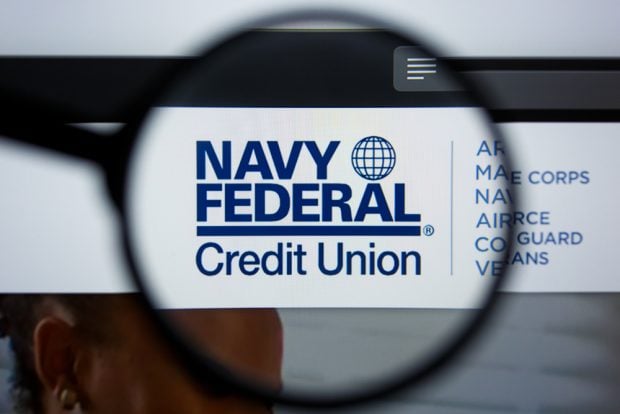Although the Credit Union Membership Access Act was signed into law on Aug. 7, 1998, the path to passage blazed a trail for today's credit union grassroots efforts.
H.R. 1151 wasn't the first time credit unions had used grassroots efforts to influence the nation's Capitol, but future use of grassroots and the credit union message greatly changed as a result.
"We'd built a strong presence. We had started before the [Supreme Court] decision," CUNA Chief Engagement Officer Susan Newton told CU Times. "We were doing petitions. The decision mobilized everyone and that's when everything did truly kick into gear."
Recommended For You
Newton joined CUNA in 1997 and served as senior vice president of member services for the Texas Credit Union League prior to joining national trade organization. She said H.R. 1151 strategy was the birthplace of current key initiatives such as CUNA's project zip code.
"We became very political at that time," Marc Schaefer, president/CEO of Truliant FCU said. "We became extremely active."
Truliant was then AT&T Family Credit Union and joined in the case filed against the NCUA for allowing AT&T to add members from a furniture factory in the area.
"We joined the case voluntarily. Our board had the courage to file court briefs," Schaefer added. "We got together data, to show value."
The trade organizations join forces to move H.R. 1151 pass out of committees and through the House and Senate.
Former Pennsylvania Democrat Rep. Paul Kanjorski told CU Times, "Most people felt we could not win that issue."
He added that it was only through the grassroots efforts of credit unions and the coming together of CUNA and NAFCU that the bill was able to pass.
"They showed tremendous leadership by putting aside their personal disputes," Kanjorski said.
However, old tactics were not going to work for this bill. The groups needed new messaging and the backing of credit union members.
"Numbers mean everything to a member of Congress, if you can show them how many people belong to credit unions," Ryan Donovan, chief advocacy officer at CUNA, said. Donovan was a Hill staffer at the time and recalled how the Hill was inundated with postcards and letters from credit union members.
"What amazes me is that voice got through very loud and very quickly," he added.
The massive number of letters would not happen in a post 9/11-world, Buddy Gill, senior policy and external relations advisor at the NCUA, told CU Times. He explained that with Anthrax scares in a post 9/11 America, mailed letters and postcards are not as likely to make it to members of Congress.
"You can get a lot of emails now, but they lack the same impact as physical letters being dragged into the office," he said.
Gill was brought in to work on the campaign in early 1998.
"The problem was they were running the campaign like a credit union versus banks campaign," he said of the initial efforts. The players were not looking at the campaign in a way that would win in a Republican-controlled Congress, he added.
Bank trade organizations were running ads, attacking the credit union tax status. In turn, credit union trades ran ads, but their messaging had changed; it was no longer a message of banks vs. credit unions. The message was about a consumer's right to choose.
That offer of choice became a rallying cry for credit unions.
"The entire effort to pass this bill was called the Campaign for Consumer Choice," John McKechnie, who at the time was vice president of legislative affairs at CUNA, said. "That was a critical thing; framing it that way made the difference. The idea was that consumers benefit when they have the option to join credit unions."
The leagues were the real heroes, according to McKechnie.
"They stepped up, cultivated and directed the grassroots to do their thing. Credit union grassroots performed magnificently," he said.
Credit union members arrived in droves for a rally held on the Capitol's steps to show support for the bill. Trade organizations brought together more than 6,000 people to the Capitol on July 14, 1998.
The rally and other grassroots efforts demonstrated that credit unions had a powerful resource they can tap into – members.
"When it came down to it, you saw that the credit unions could go to their members and really mobilize them to weigh in with their elected representatives, saying 'we need this to happen'," Brad Thaler, vice president of legislative affairs at NAFCU, said.
It was a turning point in credit union history, according to former CUNA President/CEO Dan Mica.
"Every facet of the movement came forward: CUNA, the other trades, leagues and credit union leaders from around the country. We went 24/7 for the last week up till the vote," Mica recalled.
The grassroots movement took root during that time, according to Bill Hampel, chief policy officer and chief economist at CUNA.
"We always had a grassroots effort, but a lot of our techniques we use in our grassroots efforts were developed or introduced at that time," he said.
In the third and final part of H.R. 1151 historical coverage, CU Times will dissect how the bill changed the industry and review how provisions of the bill are still affecting credit unions almost two decades later.
© Touchpoint Markets, All Rights Reserved. Request academic re-use from www.copyright.com. All other uses, submit a request to [email protected]. For more inforrmation visit Asset & Logo Licensing.






